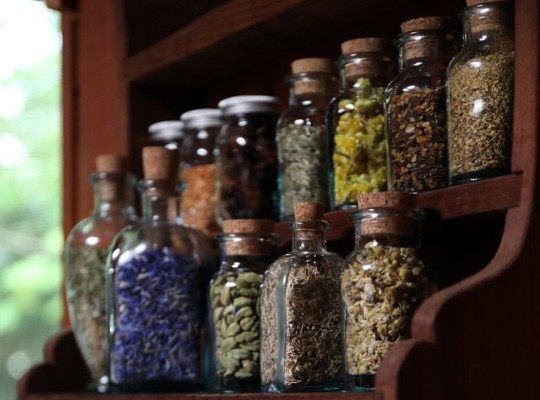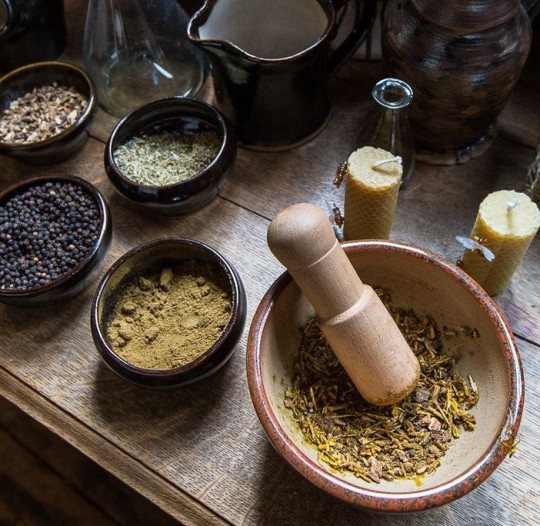#Beginner Books
Explore tagged Tumblr posts
Text

🐻 “When you first put on skis, be careful. Don’t slip. And watch where you’re going. Be sure you don’t trip.”~ The Bears’ Christmas 🎄 ❄️🐾
#The Bears’ Christmas#The Berenstain Bears#Papa Bear#Brother Bear#Papa Q. Bear#character study#character design#storybook#storybook fanart#Beginner Books#Random House Home Video#Random House#Christmas#bears#Bear Country#skiing#sledding#ice skating#snow#ice#father and son#Stan and Jan Berenstain#1970s children’s books#Berenstain Bear books#reimagined stories
2 notes
·
View notes
Text

4 notes
·
View notes
Text
Independently Reading ‘Big Shark, Little Shark’
May 30th, 2023 – Extremely proud of Andaal as she has begun to independently read ‘Big Shark, Little Shark’ which is one amazing book in the ‘Step 1 into Reading’ collection.
youtube
View On WordPress
#beginner books#book#booklover#Books#bookworm#Early Readers#early reading books#homeschool#homeschooling#independent readers#independent reading#learn#learning#learning at home#learning is fun#read#reader#readers#reading community#STEAM#STEM#Step 1 into Reading#toddler#toddler life#toddlers#Youtube
2 notes
·
View notes
Text
youtube
“Are you my mother?” By P.D. Eastman audiobook
Please subscribe if you would like to! I’d appreciate it if you could give us a like too! But if not that’s okay anyway if you could share so that other people may that would be amazing!
#“Are you my mother?” By P.D. Eastman audiobook#P.D. Eastman#youtube#audiobooks#childrens books#childrensstories#are you my mother#are you my mother?#beginner books#stories for kids#audiobooks for kids#poems for kids#books for kids#for kids#kids books#stories for children#story time for kid’s#storytime#storytelling#short story
0 notes
Text

#doctor dolittle and the pirates#Hugh lofting#Al perkins#Philip wende#beginner books#I can read it all by myself
0 notes
Text

I was possessed to draw this. The Toxic old man yaoi was too strong
#toxic old man yaoi#old man yaoi#toxic yaoi#gravity falls#gravity falls fanart#the book of bill#bill cipher#bill cipher fanart#fanart#stanford pines#ford pines#ford pines fanart#stanford pines fanart#billford#billford fanart#art#beginner artist#digital art#comic#silly#love them#dipper pines#dipper fanart
10K notes
·
View notes
Text
Herb's Properties


Basil: money, luck, prosperity, happiness
Bay Leaf: energy, cleansing, can be charged with almost any intention
Camomile: Caring, kindness, luck, growth, self-love growth, confidence, avoiding negativity, happiness
Cinnamon: passion, quick success, fire magick
Chia seeds: Growth, health, kindness, Property
Chilli flakes: Pride, confidence, power, strength, Passion
Cumin: Courage, bravery, protection, loyalty
Dandelion: wishes, charisma, success, good luck
Dill: sexual love, luck, protection
Eucalyptus: cleansing, healing, purifying, relaxing, comfort
Fennel: hate, anger
Flax seeds: Prosperity, growth, new beginnings
Ginger: fiery passion, success, and personal power
Jasmine: love, dreams, sensuality, luxury and kindness
Lavender: love and attraction, purification, relaxation, restful sleep
Nutmeg: luck, Health, Fidelity, Love, Prosperity, comfort, loyalty
Oregano: comfort, love, warmth
Paprika: Pride, confidence, power, strength
Parsley: Cleansing. purification
Peppermint: healing, purification, love and energy, cleansing, prosperity
Poppy seeds: protection, intuition, self-assurance, hexing and cursing
Rose: love, beauty, harmony, romance, attraction
Rosemary: cleansing, purification, wisdom, protection
Sesame seeds: Prosperity, growth, health, nurturing
Spearmint: love, cleansing, renewal, blessing
Sunflower seeds: happiness, growth, joy
Thyme: beauty, strength, courage
Turmeric: confidence, creativity, energy
Vanilla: love and sexuality
tip jar
#thecupidwitch#witchcraft#witch community#witches#witchcore#witch#witchblr#green witch#grimoire#herbs#book of shadows#wicca#pegan#peganism#wiccablr#pagan wicca#wiccan#magic#ko fi support#baby witch#beginner witch#chaos witch#eclectic witch#folk witchcraft#hedge witch#kitchen witch#tarot witch#traditional witchcraft#witch aesthetic#plants and herbs
20K notes
·
View notes
Text
How to make your writing sound less stiff
Just a few suggestions. You shouldn’t have to compromise your writing style and voice with any of these, and some situations and scenes might demand some stiff or jerky writing to better convey emotion and immersion. I am not the first to come up with these, just circulating them again.
1. Vary sentence structure.
This is an example paragraph. You might see this generated from AI. I can’t help but read this in a robotic voice. It’s very flat and undynamic. No matter what the words are, it will be boring. It’s boring because you don’t think in stiff sentences. Comedians don’t tell jokes in stiff sentences. We don’t tell campfire stories in stiff sentences. These often lack flow between points, too.
So funnily enough, I had to sit through 87k words of a “romance” written just like this. It was stiff, janky, and very unpoetic. Which is fine, the author didn’t tell me it was erotica. It just felt like an old lady narrator, like Old Rose from Titanic telling the audience decades after the fact instead of living it right in the moment. It was in first person pov, too, which just made it worse. To be able to write something so explicit and yet so un-titillating was a talent. Like, beginner fanfic smut writers at least do it with enthusiasm.
2. Vary dialogue tag placement
You got three options, pre-, mid-, and post-tags.
Leader said, “this is a pre-dialogue tag.”
“This,” Lancer said, “is a mid-dialogue tag.”
“This is a post-dialogue tag,” Heart said.
Pre and Post have about the same effect but mid-tags do a lot of heavy lifting.
They help break up long paragraphs of dialogue that are jank to look at
They give you pauses for ~dramatic effect~
They prompt you to provide some other action, introspection, or scene descriptor with the tag. *don't forget that if you're continuing the sentence as if the tag wasn't there, not to capitalize the first word after the tag. Capitalize if the tag breaks up two complete sentences, not if it interrupts a single sentence.
It also looks better along the lefthand margin when you don’t start every paragraph with either the same character name, the same pronouns, or the same “ as it reads more natural and organic.
3. When the scene demands, get dynamic
General rule of thumb is that action scenes demand quick exchanges, short paragraphs, and very lean descriptors. Action scenes are where you put your juicy verbs to use and cut as many adverbs as you can. But regardless of if you’re in first person, second person, or third person limited, you can let the mood of the narrator bleed out into their narration.
Like, in horror, you can use a lot of onomatopoeia.
Drip Drip Drip
Or let the narration become jerky and unfocused and less strict in punctuation and maybe even a couple run-on sentences as your character struggles to think or catch their breath and is getting very overwhelmed.
You can toss out some grammar rules, too and get more poetic.
Warm breath tickles the back of her neck. It rattles, a quiet, soggy, rasp. She shivers. If she doesn’t look, it’s not there. If she doesn’t look, it’s not there. Sweat beads at her temple. Her heart thunders in her chest. Ba-bump-ba-bump-ba-bump-ba- It moves on, leaving a void of cold behind. She uncurls her fists, fingers achy and palms stinging from her nails. It’s gone.
4. Remember to balance dialogue, monologue, introspection, action, and descriptors.
The amount of times I have been faced with giant blocks of dialogue with zero tags, zero emotions, just speech on a page like they’re notecards to be read on a stage is higher than I expected. Don’t forget that though you may know exactly how your dialogue sounds in your head, your readers don’t. They need dialogue tags to pick up on things like tone, specifically for sarcasm and sincerity, whether a character is joking or hurt or happy.
If you’ve written a block of text (usually exposition or backstory stuff) that’s longer than 50 words, figure out a way to trim it. No matter what, break it up into multiple sections and fill in those breaks with important narrative that reflects the narrator’s feelings on what they’re saying and whoever they’re speaking to’s reaction to the words being said. Otherwise it’s meaningless.
—
Hope this helps anyone struggling! Now get writing.
#writing#writing advice#writing resources#writing a book#writing tools#writing tips#writeblr#for beginners#refresher#sentence structure#book formatting
7K notes
·
View notes
Text

0 notes
Text
Uncertain Imperatives
Go, Dog. Go! By P.D. Eastman Beginner Books/Random House, 1961 Sometime in my twenties I rewatched the 1980s action comedy Crocodile Dundee. In my tweens I’d loved its story of a New York female journalist interviewing an uncouth Australian ‘bushman’ and of what happens when she brings him back to the States. There were the jokes about big knives and bidets, and the hints at sex – the image…

View On WordPress
#Beginner Books#Book Review#Children&039;s Literature#Crocodile Dundee#Dogs#ITV#Linda Kozlowski#Literature#P.D. Eastman#Picture Books#Random House#Review#Time Magazine
1 note
·
View note
Text
grimoire organization ideas 🔮
what is a grimoire?
a grimoire can be defined as a book of magical spells and invocations; sometimes used interchangeably with "book of shadows" but you can call it whatever you want.
what should i write my grimoire in / on?
a grimoire can be handwritten or typed, there is no wrong way to construct your grimoire. (for example, my grimoire is typed in a one note document but also stretched across many, many different notebooks and composition books)
what can i put in my grimoire?
about the author
favorites: color, magical tools, herbs, crystals
tarot birth card, astrology birth chart, personal beliefs, relationship with deities or other spiritual beings
basics
intent
visualization
meditation
terminology
protection, cleansing, & banishing using various energies: shields & wards, circle casting / take down, protective amulets
enchanting items
clockwise vs. counterclockwise
other how-to’s, such as anointing items and dressing a candle
general correspondences
days of the week, lunar phases, colors, incense, essential oils, elements
correspondences based on intent
protection, healing, cleansing, banishing, luck, wealth, love, emotions, mental clarity, psychic awareness, cursing, etc.
altar ideas
crystals
crystal grid designs, crystal correspondences & folklore, gem water / crystal elixir recipes, crystal care
herbs, spices, plants, flowers, & trees
correspondences, edible vs. non-edible, botanicals with medicinal value, folklore, gardening
divination
tarot, runes, pendulum, scrying, etc.
spreads
interpretations
astrology
birth chart + traits, planetary correspondences, planetary hours, zodiac correspondences, moon / star / sun water
sigils & symbols
how to create, personal sigils, other symbols & talismans
psychic abilities
identification of personal abilities (clairvoyance, claircognizance, clairaudience, clairsentience, clairambience, etc.)
meditation techniques to strengthen abilities
personal experiences
important dates
sabbats, wheel of the year, magical anniversaries, astronomical & astrological phenomena (meteor showers, planetary alignments, etc.)
recipes
food
potions (potions are edible and consumable liquids!!!)
beauty products: salt scrubs, sugar scrubs, lotions, lip balm
natural remedies: salves, ointments, balms, poultices
cleaning products: floor washes, window cleaner, wood cleaner, etc.
powders
witchy crafts
glitter jars, witch ladders, wand-making, crystal jewelry, etc.
spells & enchantments
sachets, spell jars / bottles, knot magic, candle spells, powder spells, curses, protective magic, etc.
magical goals
∘₊✧─────────────────────✧₊∘
good luck! ✨
© 2025 ad-caelestia
#grimoire#book of shadows#witchcraft#witchblr#beginner witch#witch#witchy#witches of tumblr#baby witch#spellcraft#magic#spellbook#ad-caelestia
1K notes
·
View notes
Text
What it means to write a book
Yes, I’m writing a book.
By which I mean, I made some characters, set them loose in a world and now I have no control over anything.
#kidnappedwriter#writers on tumblr#writing#my writing#writeblr#creative writing#am writing#aspiring writer#beginner writer#fiction writing#indie writer#new writers on tumblr#writer things#writerblr#writers of tumblr#writers on writing#writing a book#writing community#writing blog#writing is hard#writing life#writing problems#writing humor#writerscommunity#writer stuff#writer struggles#writer problems#writer on tumblr#writer community#tumblr writers
647 notes
·
View notes
Text
Where to draw your sigils..
Looking for ideas on where to inscribe your sigils for extra magickal oomph? Whether you’re charging intentions, manifesting goals, or just enchanting your daily life, here are some witchy places to draw them:
• On your skin for personal empowerment
• In your grimoire or spellbook to boost your craft
• On letters and stationary to send your magick out into the world
• On teapots and cups for enchanted brews
• On Polaroid cameras to capture good vibes
• On plant pots to encourage growth and vitality
• On spell bottles or ingredients to seal your intention

#sigils#witchblr#witchcore#witchcraft#witchlife#white witch#beginner witch#witch tips#grimoire#spirituality#green witch#sigil#book of shadows
366 notes
·
View notes
Text
youtube
Please Remember The First Of Octember by Theo LeSieg
Please subscribe if you would like to! I’d appreciate it if you could give us a like too! But if not that’s okay anyway if you could share so that other people may that would be amazing!
#Please Remember The First Of Octember#Theo LeSieg#youtube#audiobooks#childrens books#childrensstories#story time for kid’s#audiobooks for kids#poems for kids#books for kids#for kids#kids books#kids#storytime#storytelling#for nostalgia#dr Suess beginner books#dr Suess#beginner books
0 notes
Text

1 note
·
View note
Text

I had to draw ford as that one Turkish Olympic shooter bc you can't tell me that's not just him if he was turkish
#hes defo about to shoot bill btw#gravity falls#the book of bill#ford pines#ford pines fanart#fanart#gravity falls fanart#artists on tumblr#art#beginner artist#digital art#olympics#stanford pines fanart#stanford pines#gf#Olympic shooting#olympics 2024
1K notes
·
View notes